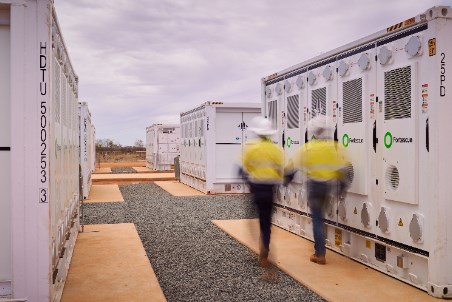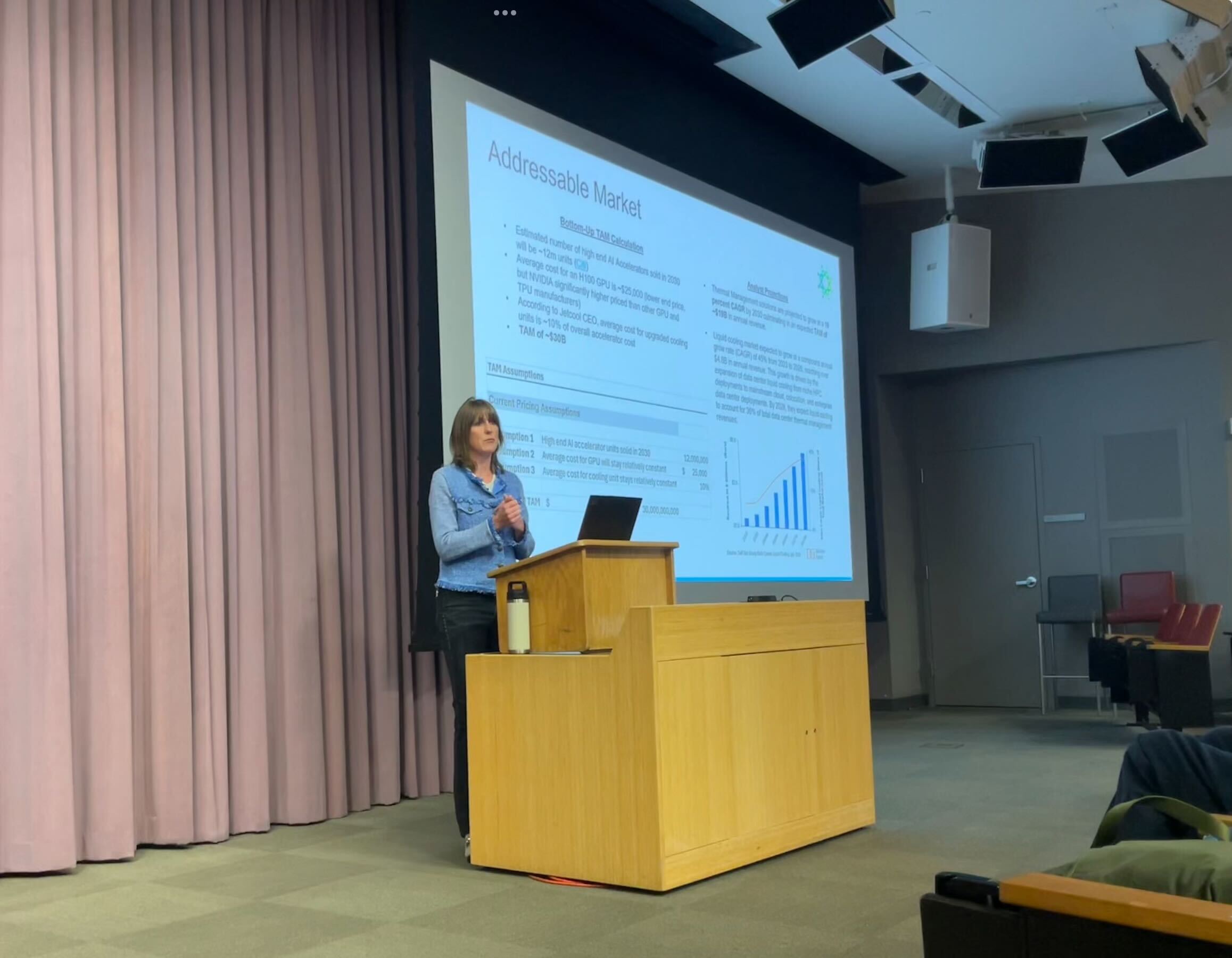Saudi power chair: Tariffs weaken the global energy transition and hurt humanity – Fortune

Global Energy Transition and Sustainable Development Goals
Advancing SDG 7: Affordable and Clean Energy
A report from the Fortune Global Forum in Riyadh indicates that while the global energy transition is progressing, its full potential is being hampered. Industry leaders emphasized the necessity of a diversified energy portfolio to achieve Sustainable Development Goal 7 (SDG 7), ensuring universal access to affordable, reliable, and modern energy. This strategy involves an optimal mix of renewable sources like solar and wind, complemented by battery storage, alongside traditional energy sources to guarantee secure and clean electricity for all populations.
- ACWA Power, a leading developer, is expanding renewable energy and water desalination projects across Asia and Africa, directly contributing to SDG 7 and SDG 6 (Clean Water and Sanitation).
- Masdar, based in Abu Dhabi, is advancing the UAE’s goal of generating 50% of its electricity from renewables by 2030.
- Engie is prioritizing investment in a variety of low-carbon generation sources tailored to specific geographical needs, ensuring the delivery of reliable and efficient power.
Challenges to Sustainable Energy Growth
The advancement of SDG 7 is facing significant political and economic headwinds. Mohammad Abunayyan, Chairman of ACWA Power, identified two primary obstacles:
- Trade Barriers: The imposition of tariffs and other trade restrictions on imports and exports is making the energy transition more complicated and expensive for all nations. These barriers unnecessarily obstruct the global cooperation required to meet sustainability targets.
- Politicization of Energy: Political rhetoric against renewable energy sources creates a “great disturbance” that undermines efforts to build a global consensus on clean energy, directly impacting the collaborative spirit of SDG 17 (Partnerships for the Goals).
The Role of Innovation and Infrastructure (SDG 9)
Achieving a sustainable energy future is intrinsically linked to SDG 9 (Industry, Innovation, and Infrastructure). The report highlights several key innovations driving the transition:
- Green Hydrogen: ACWA Power is constructing the NEOM Green Hydrogen Project, the world’s largest, which will produce green ammonia and is scheduled for completion in 2027.
- Integrated Renewable Systems: Masdar has initiated a one-gigawatt project combining solar power, battery storage, and AI software management to provide consistent, “round-the-clock” renewable power, overcoming the challenge of intermittency.
- Smart Grid Technology: Engie’s CEO, Catherine MacGregor, stressed that the solution is not a single technology but the “very smart integration” of technologies through advanced, smart grids to ensure grid reliability and efficiency.
- Supply Chain Leadership: The report credits “Chinese innovation” for leading the energy transition, noting China’s dominant role in the supply chains for wind turbines, solar panels, and battery components, which is critical for building sustainable infrastructure globally.
Fostering Global Partnerships for the Goals (SDG 17)
The discussions underscored that achieving the SDGs, particularly in the energy sector, is impossible without robust international cooperation. Mr. Abunayyan issued a strong call for global integration, stating, “The whole globe needs each other… We need to work together.” This sentiment directly reflects the core principles of SDG 17.
- The need to remove trade barriers was presented as essential for creating a collaborative environment where solutions can be developed for the benefit of all people.
- The partnership between ACWA Power and the China Southern Power Grid in Asian wind subsidiaries serves as a model for the cross-border investment and collaboration needed to accelerate the energy transition.
- The acknowledgment of China’s role highlights the interdependence of nations in achieving a global shift to sustainable energy, reinforcing that climate action (SDG 13) is a shared responsibility.
Analysis of Sustainable Development Goals in the Article
1. Which SDGs are addressed or connected to the issues highlighted in the article?
- SDG 7: Affordable and Clean Energy: The article’s central theme is the global transition to clean, accessible, and affordable electricity. It discusses various renewable energy sources like solar and wind, the importance of battery storage, and the goal of providing secure and cost-competitive power worldwide.
- SDG 9: Industry, Innovation, and Infrastructure: The text highlights innovation in the energy sector, such as “Chinese innovation” in supply chains for wind turbines and solar panels, and the development of new infrastructure like the “NEOM Green Hydrogen Project” and Masdar’s “one-gigawatt renewable project” that combines solar power, battery storage, and AI software.
- SDG 13: Climate Action: The entire discussion on shifting from fossil fuels to renewables is a core strategy for climate action. The article emphasizes making “new electricity generation as green as possible” and leaning into “low-carbon generation sources” to mitigate climate change.
- SDG 17: Partnerships for the Goals: The article stresses the need for global cooperation, stating, “The whole globe needs each other. We need to work together, we need to have integration.” It also criticizes the negative impact of “tariff wars” and “trade barriers” on the energy transition, advocating for a more collaborative global approach. The partnerships mentioned, such as between Saudi Arabia’s ACWA Power and China’s Southern Power Grid, exemplify this goal.
2. What specific targets under those SDGs can be identified based on the article’s content?
- Target 7.1: By 2030, ensure universal access to affordable, reliable and modern energy services. The article directly addresses this by mentioning the “global need” to produce “enough electricity for people in every part of the world to have the most secure, clean, and affordable energy.”
- Target 7.2: By 2030, increase substantially the share of renewable energy in the global energy mix. This is a primary focus, with mentions of solar, wind, and green hydrogen projects. A specific example is the UAE’s aim to “have 50% of its electricity generated by renewables by 2030.”
- Target 7.a: By 2030, enhance international cooperation to facilitate access to clean energy research and technology… and promote investment in energy infrastructure and clean energy technology. The article supports this by praising China for “giving solutions to the world” and criticizing trade barriers that make the transition “more complicated for the world.”
- Target 9.4: By 2030, upgrade infrastructure and retrofit industries to make them sustainable… with greater adoption of clean and environmentally sound technologies. The development of advanced projects like Masdar’s “round-the-clock” renewable project with battery storage and AI management is a direct example of upgrading infrastructure with clean technology.
- Target 13.2: Integrate climate change measures into national policies, strategies and planning. The UAE’s national goal of achieving 50% renewable electricity generation by 2030 is a clear instance of a country integrating climate measures into its national strategy.
- Target 17.10: Promote a universal, rules-based, open, non-discriminatory and equitable multilateral trading system. The article’s strong criticism of “tariff wars” and “barriers with imports, exports” as a “great disturbance” that makes energy “very expensive for everybody” directly relates to the need for an open trading system to support the global energy transition.
3. Are there any indicators mentioned or implied in the article that can be used to measure progress towards the identified targets?
- Indicator 7.1.1 (Proportion of population with access to electricity): While not providing a specific number, the article’s goal to provide “enough electricity for people in every part of the world” implies that measuring the proportion of the population with access is a key metric of success.
- Indicator 7.2.1 (Renewable energy share in the total final energy consumption): This is explicitly mentioned. The UAE’s target to have “50% of its electricity generated by renewables by 2030” serves as a direct, measurable indicator of progress for this target.
- Indicator 9.4.1 (CO2 emission per unit of value added): The article implies this indicator by focusing on making electricity generation “as green as possible” and using “low-carbon generation sources.” The success of projects like the NEOM Green Hydrogen Project would be measured by their ability to produce energy with minimal to zero carbon emissions.
- Indicator 17.10.1 (Worldwide weighted tariff-average): The article’s concern about “tariff wars” and “trade barriers” on renewable energy components implies that the level of tariffs on these goods is a critical indicator. A reduction in these tariffs would signify progress towards a more open trading system that facilitates the energy transition.
SDGs, Targets and Indicators Summary
| SDGs | Targets | Indicators |
|---|---|---|
| SDG 7: Affordable and Clean Energy | 7.1: Ensure universal access to affordable, reliable and modern energy services. 7.2: Increase substantially the share of renewable energy in the global energy mix. |
The goal to provide “enough electricity for people in every part of the world.” The UAE’s specific goal: “50% of its electricity generated by renewables by 2030.” |
| SDG 9: Industry, Innovation, and Infrastructure | 9.4: Upgrade infrastructure and retrofit industries to make them sustainable, with greater adoption of clean and environmentally sound technologies. | Development of specific projects like the “one-gigawatt renewable project” and the “world’s largest green hydrogen project.” |
| SDG 13: Climate Action | 13.2: Integrate climate change measures into national policies, strategies and planning. | National policies such as the UAE’s 2030 renewable energy target. |
| SDG 17: Partnerships for the Goals | 17.10: Promote a universal, rules-based, open, non-discriminatory and equitable multilateral trading system. | The presence or absence of “tariff wars” and “trade barriers” on renewable energy technologies and components. |
Source: fortune.com
What is Your Reaction?
 Like
0
Like
0
 Dislike
0
Dislike
0
 Love
0
Love
0
 Funny
0
Funny
0
 Angry
0
Angry
0
 Sad
0
Sad
0
 Wow
0
Wow
0
















































:focal(1500,1000)/https://media.globalcitizen.org/a6/9a/a69a4720-d8a1-4715-b596-18738d03c05c/rotary_polio_hero_image.jpg?#)







/countries/sri-lanka/photo-credit---dmc-sri-lanka.tmb-1200v.jpg?sfvrsn=dc298bcc_1#)
















